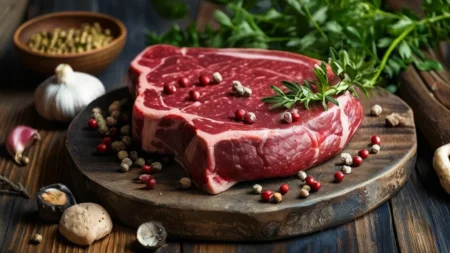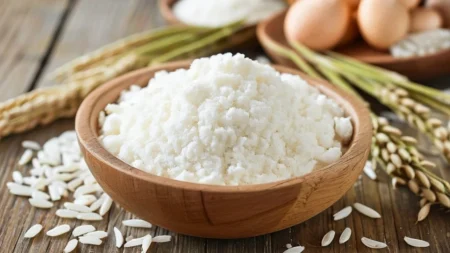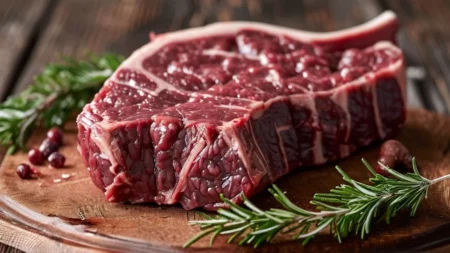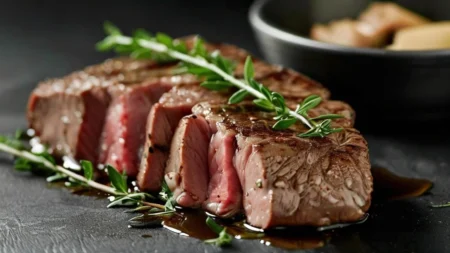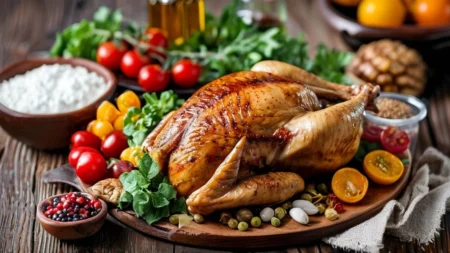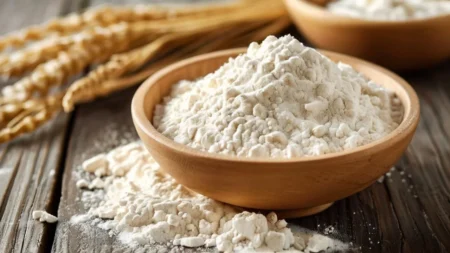Peanuts: A Nutrient-Dense Snack with Numerous Health Benefits
Key Takeaways:
- Peanuts are rich in protein, healthy fats, and various essential vitamins and minerals.
- They promote heart health, aid in weight management, and support brain function.
- Peanuts can be enjoyed raw, roasted, or as peanut butter and are widely used in cooking and baking.
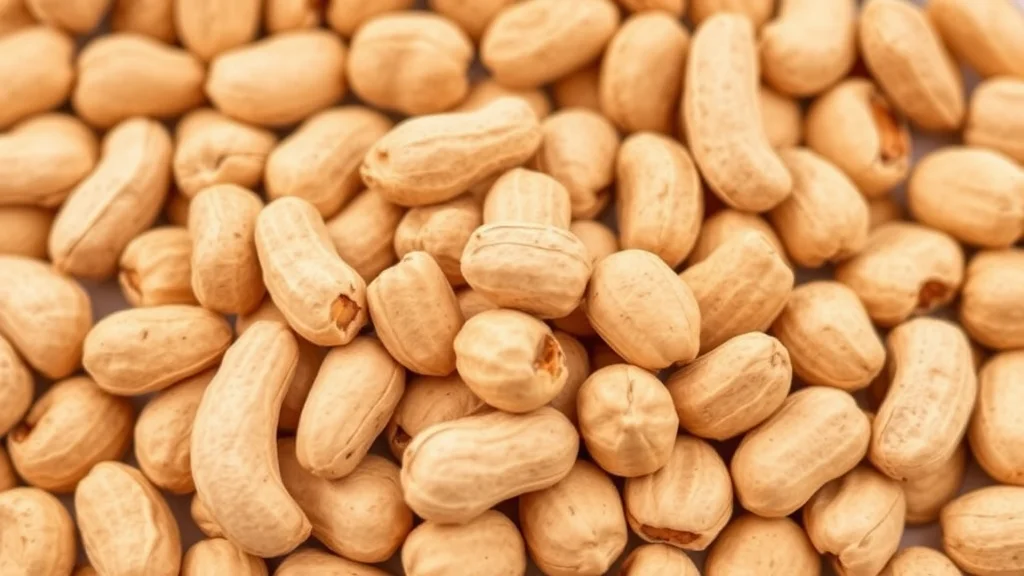
Nutritional Profile of Peanuts
Peanuts are packed with nutrients, making them a great snack or addition to meals. Below is the nutritional breakdown for a 1-ounce (28 grams) serving of raw peanuts:
| Nutrient | Amount |
|---|---|
| Calories | 161 kcal |
| Protein | 7.3 grams |
| Total Fat | 14 grams |
| Carbohydrates | 4.6 grams |
| Dietary Fiber | 2.4 grams |
| Vitamin E | 2.4 mg (16% DV) |
| Magnesium | 50 mg (13% DV) |
| Phosphorus | 107 mg (11% DV) |
Rich in Healthy Fats and Protein
Peanuts are an excellent source of plant-based protein and healthy monounsaturated and polyunsaturated fats. These fats are known to support heart health by lowering bad cholesterol (LDL) and improving good cholesterol (HDL) levels.
Health Benefits of Peanuts
1. Heart Health Support
Peanuts contain high levels of monounsaturated and polyunsaturated fats, which are beneficial for heart health. These fats help reduce the risk of cardiovascular diseases by lowering LDL cholesterol levels. Additionally, peanuts are a good source of resveratrol, a compound linked to improved heart health and reduced inflammation.
2. Promotes Weight Management
Despite their calorie density, peanuts can aid in weight management due to their high protein and fiber content. Both protein and fiber promote feelings of fullness, which may help reduce overall calorie intake throughout the day.
3. Supports Brain Function
Peanuts are rich in niacin (vitamin B3) and folate, both of which are essential for brain health. Niacin supports cognitive function and may help protect against age-related cognitive decline, while folate plays a crucial role in brain development and the production of neurotransmitters.
Different Types of Peanuts
There are four main types of peanuts, each with its unique flavor and uses:
| Type | Description |
|---|---|
| Runner Peanuts | Most commonly used for peanut butter due to their uniform size. |
| Virginia Peanuts | Larger peanuts often sold as gourmet or roasted snacks. |
| Spanish Peanuts | Small, red-skinned peanuts commonly used in candies and oils. |
| Valencia Peanuts | Sweet and often eaten boiled or used in natural peanut butter. |
Runner Peanuts
Runner peanuts are the most popular variety for making peanut butter due to their consistent size and high yield. They have a rich flavor and smooth texture when processed.
Virginia Peanuts
Virginia peanuts are larger than other varieties and are often enjoyed as roasted snacks. They are also used in making gourmet peanut products due to their crunchy texture and robust flavor.
How to Incorporate Peanuts into Your Diet
Peanuts are incredibly versatile and can be enjoyed in various forms. Here are some ways to incorporate them into your diet:
1. Raw or Roasted Peanuts
Enjoy raw or roasted peanuts as a simple snack. They can be flavored with salt, spices, or honey for added taste. Roasted peanuts provide a satisfying crunch and are easy to carry on the go.
2. Peanut Butter
Peanut butter is a classic way to enjoy peanuts. Spread it on toast, use it in smoothies, or pair it with fruits like apples and bananas. Opt for natural peanut butter without added sugars or oils for the healthiest option.
3. Cooking and Baking with Peanuts
Peanuts can be added to various dishes, from salads and stir-fries to cookies and cakes. Their nutty flavor complements both sweet and savory recipes, making them a versatile ingredient.
Peanuts and Weight Management
Despite being energy-dense, peanuts can be part of a healthy diet for weight loss or maintenance. Research suggests that the combination of protein, fiber, and healthy fats in peanuts helps promote satiety, reducing overall calorie intake. Studies have shown that regular peanut consumption may even help prevent weight gain when eaten in moderation.
Peanuts vs. Tree Nuts: A Comparison
Though often grouped with tree nuts like almonds and walnuts, peanuts are actually legumes. Here’s a comparison of their nutrient profiles:
| Nut (Per 28g) | Calories | Protein | Fat | Fiber |
|---|---|---|---|---|
| Peanuts | 161 kcal | 7.3 g | 14 g | 2.4 g |
| Almonds | 164 kcal | 6 g | 14 g | 3.5 g |
| Walnuts | 185 kcal | 4.3 g | 18.5 g | 1.9 g |
Peanuts offer a higher protein content compared to other nuts like walnuts and almonds, making them a great plant-based protein source.
Allergies and Peanuts
Peanut allergies are one of the most common food allergies, particularly in the United States. It’s important for individuals with peanut allergies to avoid peanuts and products containing them. In recent years, treatments such as oral immunotherapy have been explored to help desensitize individuals to peanuts, but caution is always necessary.
Conclusion
Peanuts are a nutrient-dense food that provides numerous health benefits, including support for heart health, weight management, and brain function. Their versatility in cooking and snacking makes them a popular choice for people looking for a healthy, high-protein food. Whether you enjoy them raw, roasted, or as peanut butter, incorporating peanuts into your diet can enhance both flavor and nutrition.
FAQ
Q: Are peanuts good for weight loss?
A: Yes, peanuts can support weight loss due to their high protein and fiber content, which promotes fullness and reduces overall calorie intake.
Q: Are peanuts and peanut butter the same nutritionally?
A: While peanuts and peanut butter are similar nutritionally, peanut butter may contain added sugars and oils. Choosing natural peanut butter with no additives is the healthiest option.
Q: Can peanuts improve heart health?
A: Yes, peanuts are rich in healthy fats that help lower LDL cholesterol and reduce the risk of heart disease.
Q: How can I store peanuts to keep them fresh?
A: Peanuts should be stored in an airtight container in a cool, dry place. To extend their shelf life, you can refrigerate or freeze them.





